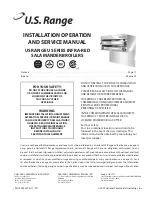
4.2 Choosing the location
4.1 Important information
4 Installation
6 720 608 487
B To prevent corrosion, the combustion air must not be damaged
plastic, cold water inlet and hot water outlet (ZW ...)
must be made of metal pipes with a minimum length of
1.5m.
B The rules and directives in force will be observed.
They can be found, for example, in solvents,
solvents, paints, adhesives, flue gases and cleaning
products.
will rinse the entire installation thoroughly.
B Install a gas valve in the position closest to the boiler.
B Check that the boiler is suitable for the type of gas available.
B Check the minimum installation instructions in the
accessory installation instructions.
B A leak test should be followed after installation of the gas
network, apart from careful cleaning. Such a test shall be
performed with the boiler gas valve closed in order to
avoid damage due to overpressure.
B Before installation, the necessary approvals and
approvals will be sought and obtained from the
competent authorities.
The maximum temperature of the boiler surfaces is below
85ÿC. No special protective measures are required for
constructions made of combustible materials or with built-in
furniture. However, the different regional regulations in relation
to these issues need to be taken into account.
B Each heater shall be provided with a ventilation system
(manual or automatic), as well as filling and draining
valves at the lowest point of the installation.
reducer are suitable for boiler requirements (see
technical information in 2.12).
limestone at the entrance to the network or filling the circuit
with water treated by limestone.
B To prevent corrosion, the combustion air must be free of
hazardous substances. Halogenated acids containing
chlorine or fluorine bonds are considered to be corrosion-
promoting substances.
If it is not possible to meet these conditions, another
location must be chosen for the gas inlet and outlet.
13
closed hot water and central heating according to DIN
4751, Part 3. No minimum flow is required for recirculated
water.
B Check the flow rate and pressure supplied by
(TR 12, TRZ 12-2, TR 15 RF, EU 9 D) and thermostatic
faucets (TK1) in radiators you can get more economical
operation.
authorized.
B The boiler will only be installed in heating systems with
Provisions regarding the location of the plant
Location, connection to the electricity
network, to the gas network, connection to
the flue gas discharge and commissioning
can only be carried out by specialized
companies (gas or electricity).
B If domestic water pipes are made of
Combustion air
B Use detergent as needed, but then
B Do not use heaters or galvanized pipes. This prevents
the formation of gases.
B Clean the system to remove any foreign matter or grease
particles that could affect the proper operation of the boiler.
Installing
B It is mandatory to install a siphon drain under the boiler to
allow water to drain from the boiler safety valve.
No solvents or aromatic hydrocarbons (petrol,
mineral oil) should be used for cleaning.
B Open heating systems will be transformed into closed
systems.
Before starting the boiler:
Surface temperature
B When using a room thermostat: do not install any
thermostatic valve on the heating element (radiator) of the
control room.
The boiler can only be installed in the
countries specified on the nameplate.
B Where water contains a large amount of limestone, a
treatment system is recommended
B If you are installing Junkers room thermostats
contain corrosive substances.
Machine Translated by Google














































